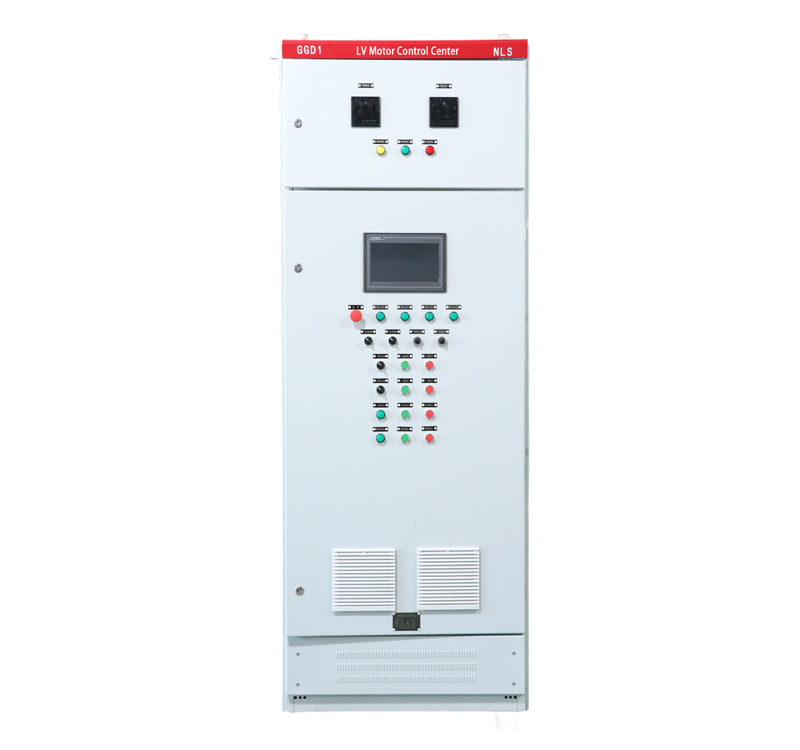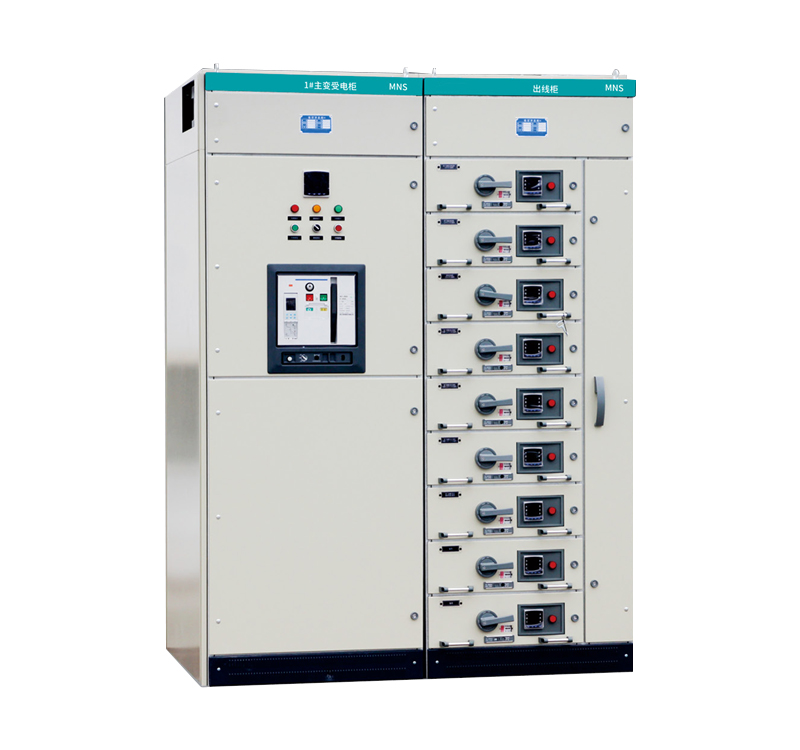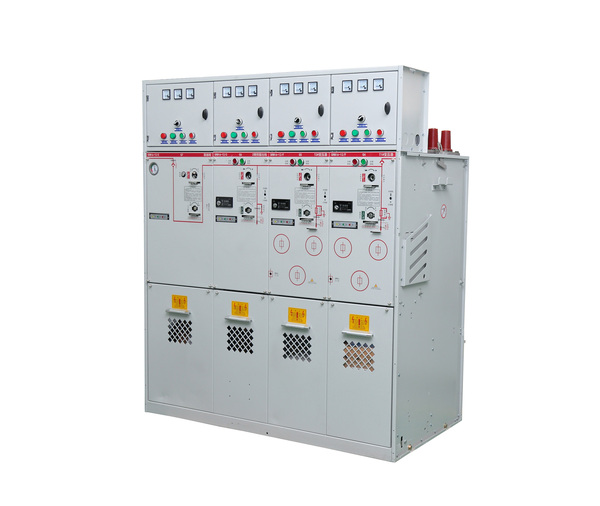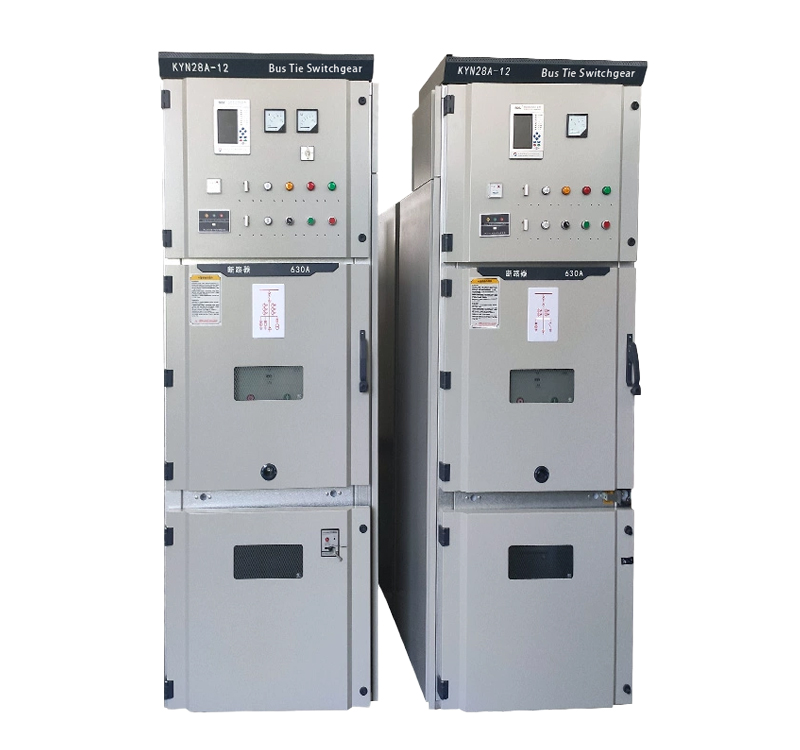
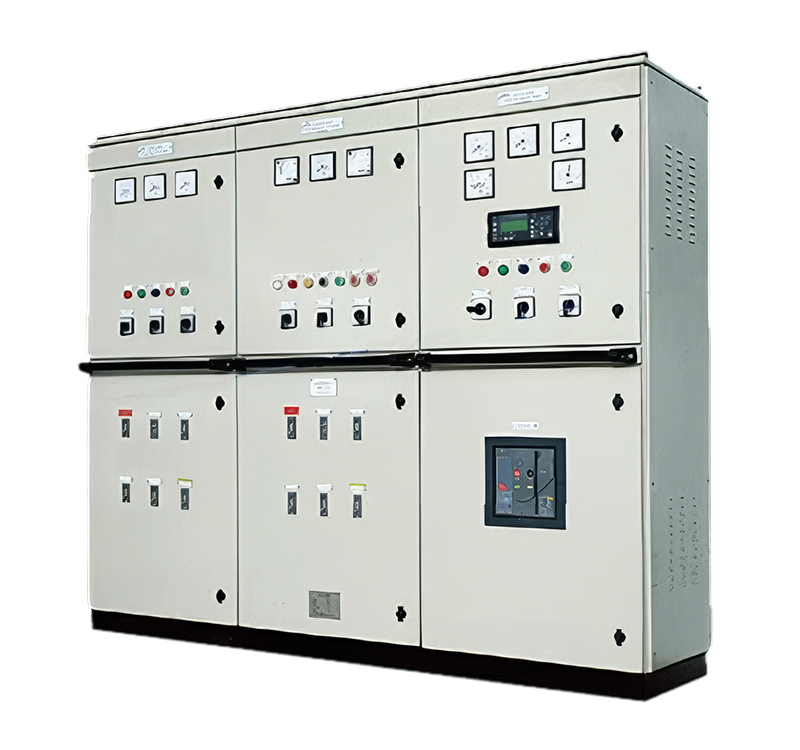
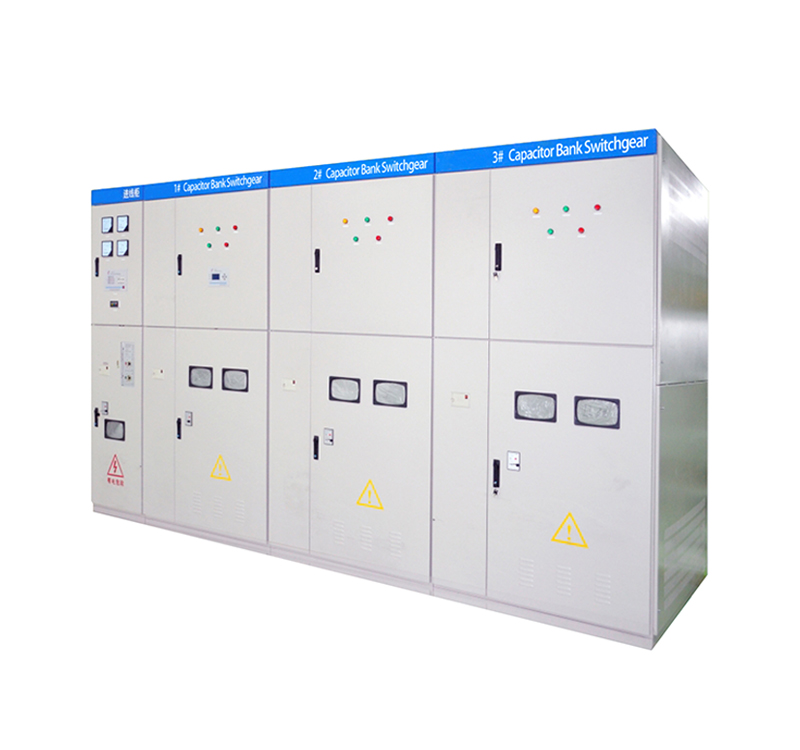
Scope of Application:Low-voltage outgoing feeder switchgear is widely used in scenarios requiring the safe and reliable distribution of electrical energy, commonly found in power distribution systems for industrial plants, commercial buildings, data centers, infrastructure, and residential projects. It is primarily used to distribute low-voltage power from transformers to various floors, workshops, or specific electrical equipment, such as motors, lighting, and socket circuits. Its applicable international common voltage levels include 230V/400V (three-phase four-wire systems), 380V/415V, 480V (three-phase three-wire or four-wire systems), as well as higher 600V and 690V systems.
Selection Parameters:Key parameters to consider during selection include: rated operational voltage, such as 400V, 480V, 690V; rated insulation voltage, typically 690V or 1000V; rated current, ranging from 63A to 6300A; rated short-time withst
1.Product Overview
The low-voltage outgoing feeder switchgear is a core component of low-voltage power distribution systems, designed for receiving, distributing, protecting, and controlling electrical energy at voltage levels up to 1000V AC. It is designed and manufactured based on international standards (such as IEC 61439), featuring a modular structure that integrates circuit breakers, measuring instruments, and protective devices within a secure and reliable enclosure. This equipment not only provides basic circuit switching functionality but also offers comprehensive management of downstream feeder circuits through advanced protection and control units, ensuring the stability, safety, and maintainability of the power system, making it suitable for various demanding industrial environments.
2. Switchgear Model and Dimensions
Common switchgear models include fixed-type distribution boards and withdrawable switchgear, such as the MNS, Prisma, and Blokset series. Their typical dimensions range in height from 1800 millimeters to 2200 millimeters, width from 400 millimeters to 1000 millimeters, and depth typically between 600 millimeters and 1000 millimeters. Specific dimensions depend on the manufacturer’s design, the number of circuits, and the current rating.
3. Product Functions
Circuit Protection Function: Provides overload protection, short-circuit protection, and earth fault protection by integrating fuses, circuit breakers, and Protection relays, promptly interrupting faulty circuits to prevent equipment damage and incident escalation.
Power Distribution Function: Acts as a distribution hub, allocating power from the main incoming supply through multiple outgoing feeder circuits to different loads or sub-distribution boards, enabling rational and orderly power distribution.
Control and Operation Function: Offers capabilities for local manual operation and remote automatic control. Enables starting, stopping, and automatic control of loads such as motors through contactors, relays, and intelligent controllers.
Monitoring and Communication Function: Integrates ammeters, voltmeters, energy meters, and intelligent protection devices for real-time monitoring of electrical parameters. Utilizes communication interfaces (e.g., Modbus, Profibus) to upload data to monitoring systems, enabling remote monitoring, energy management, and fault alarm.
Safety Isolation Function: Equipped with disconnectors or the isolated position of withdrawable units, ensuring reliable electrical isolation between the circuit and the power source during maintenance and inspection, safeguarding personnel.
4. Product Composition
Enclosure Structure: Typically made of high-quality galvanized steel sheet or aluminum-zinc plate, providing mechanical support and protection. Its Protection Degree (IP Code) defines the level of dust and water resistance.
Busbar System: Includes main busbars and vertical busbars, constructed from copper or aluminum bars, responsible for transmitting power within the switchgear.
Outgoing Feeder Units (Core Equipment): These are the core functional modules of the switchgear, typically installed in fixed or withdrawable formats. Core equipment includes:
Circuit Breakers: Such as Molded Case Circuit Breakers (MCCBs) or Miniature Circuit Breakers (MCBs), used for making, breaking circuits, and providing overload and short-circuit protection.
Disconnectors / Isolators: Provide points for safe electrical isolation, ensuring maintenance safety.
Contactors: Used for frequently making and breaking load circuits like motors.
Protection Relays: Intelligent electronic devices that provide more precise, configurable protection functions (e.g., overcurrent, undervoltage) and measurements.
Measuring Instruments: Digital multi-function meters for measuring and displaying parameters like voltage, current, power, and energy.
Instrument Transformers: Current Transformers (CTs) and Voltage Transformers (VTs), used for isolating and scaling main circuit current and voltage signals for use by instruments and protective devices.
Auxiliary Equipment: Includes control circuits, terminal blocks, indicator lights, push buttons, and communication modules.
5. Product Parameters
Electrical Parameters:
Rated Voltage: The maximum rated operational voltage for the main circuit is up to 1000V AC, with common levels being 400V, 480V, and 690V. The rated insulation voltage is typically 690V or 1000V.
Rated Current: The rated current of the main busbar can reach up to 6300A. The branch circuit current ranges from 16A to 3200A depending on the circuit breaker specification.
Short-Circuit Performance: The rated short-time withstand current is typically 25kA to 100kA, for a duration of 1 second or 3 seconds. The rated short-circuit breaking capacity matches this, up to 150kA.
Frequency: Suitable for power systems with 50Hz or 60Hz.
Mechanical and Structural Parameters:
Enclosure Protection Degree: Typically IP30 or IP41 for indoor types, and can reach IP54 where water jet protection is required.
Materials: The enclosure is made of cold-rolled steel sheet, galvanized steel sheet, or stainless steel; busbars are made of copper or aluminum.
Installation Method: Outgoing feeder units can be fixed type or withdrawable type. Withdrawable types have Service, Test, and Disconnected positions for easier maintenance.
Environmental and Standards:
Operating Environment: The standard operating temperature range is from -5°C to +40°C, with a storage temperature range from -25°C to +55°C. The maximum relative humidity is up to 95%, non-condensing.
Compliant Standards: Design and manufacturing comply with the IEC 61439 series standard. In North America, they may also comply with UL 891 or UL 1558 standards.

